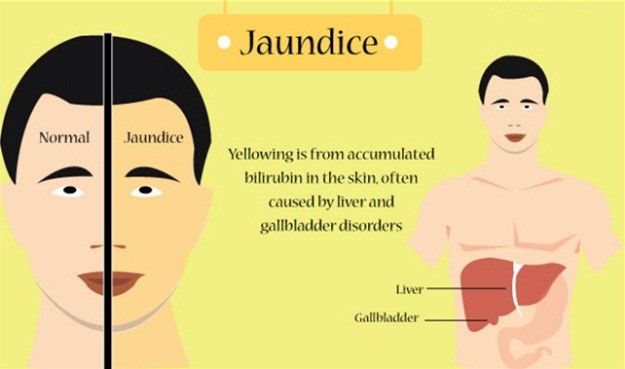 New Health Guide
New Health Guide
Jaundice describes a condition where the skin and other parts of your body, such as the eyes, turn yellow. What causes jaundice is the accumulation of a substance called bilirubin in the body. Although bilirubin is normally produced by the body in small amounts, its accumulation in large amounts in the tissues causes yellow discoloration of the white of the eyes and the skin. This is not a normal condition and you must see a doctor to know why you have jaundice. Your treatment will depend on what is causing your condition.
Hyperbilirubinemia, or excess bilirubin, is the main reason why someone develops jaundice. The yellow color is from the bilirubin pigment, which is released when old red blood cells are broken down. This is normally filtered by the liver and is released into the intestines for excretion.
A newborn baby has an immature liver, which may not be able to remove bilirubin immediately, thus causing the accumulation of bilirubin and yellowing of the skin. This condition is called physiologic jaundice, which is normal for some newborn babies. This typically appears on their second or third day after birth, and disappears without medical treatment.
Some infants are jaundiced from the day they are born, or sometimes much later than the third day after birth. In these infants, an underlying disorder is associated with their jaundice. Diseases that can cause non-physiologic jaundice include:
 An increase in the rate of breakdown of the red blood cells usually results in increased bilirubin production, which may circulate in the bloodstream. Liver cells are not able to keep up with the pace to process excess bilirubin, resulting in build-up and spillage in the blood. Conditions that lead to an increased red blood cell breakdown include:
An increase in the rate of breakdown of the red blood cells usually results in increased bilirubin production, which may circulate in the bloodstream. Liver cells are not able to keep up with the pace to process excess bilirubin, resulting in build-up and spillage in the blood. Conditions that lead to an increased red blood cell breakdown include:
Conditions involving your liver cells may cause build-up of excess bilirubin. You may have a liver enzyme deficiency, an obstruction to the flow of bilirubin from the liver to the bile ducts, or a problem with damaged liver cells. These conditions may result in poor processing of bilirubin, which may spill into the bloodstream to cause jaundice. Liver cell problems that may cause abnormal bilirubin production include:
The liver has small bile ducts that allow passage of bile, containing bilirubin, for excretion. If these bile ducts are narrowed or damaged, bile flow becomes restricted. Bile spills into your bloodstream, leading to jaundice. Primary biliary cirrhosis and primary sclerosing cholangitis are examples of bile duct problems.
From the bile ducts, bilirubin-containing bile drains from the liver into your common bile duct (CBD). Obstruction of the CBD causes excess bile to join the bloodstream, leading to jaundice. Conditions that cause obstructive jaundice include:
Jaundice may be prevented by avoiding the underlying cause. These include:
Watch the video to have a general idea on treatments of jaundice: